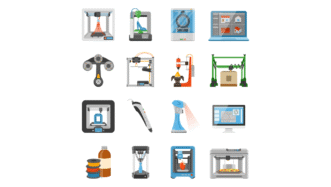Last update: Apr 2, 2025
LESSON OVERVIEW
The main objectives of this updated lesson are to:
- do conditionals review (First, Second and Third conditional);
- learn phrasal verbs;
- discuss using the Agile model in family life.
With this lesson, students watch a video (18min) at home and explore some phrasal verbs. The lesson has been updated with a new listening comprehension task and a more comprehensive grammar part.
This is a Flipped Classroom lesson plan. In a nutshell, it means that the first part of the lesson needs to be done by students at home. Learn more about flipped classroom and how we implement it in these lesson plans in our post.
PRE-CLASS ACTIVITIES
In the pre-class part, students watch an 18-minute long TED talk about the Agile method and how it can be adapted to family life. While watching the video, students do a listening comprehension activity. They need to choose correct sentence endings according to what the speaker says. The video provides the context for conditionals review in the in-class part of the lesson. Next, students do a gap-filling task in which they have to complete gaps in sentences to create phrasal verbs (e.g. stumble upon, get over, come up with).
IN-CLASS ACTIVITIES
CONDITIONALS REVIEW
Students start the in-class part of the lesson with a warm-up activity. They complete collocations with the word ‘family’ (e.g. raise a family, family gathering, extended family) using some prompts. Then, students discuss questions about the ideas from the video. After that, they do conditionals review. First, they choose correct verb forms to create three sentences in three different conditional structures. Then, they do a guided discovery task in which they look at the structures in more detail. Next, they need to complete gaps in sentences with correct forms of verbs in brackets.
PRACTICE
After that, students have to finish some sentences with their own ideas. The sentences are about Agile and family life and serve as conditionals review as students need to use the three conditionals to complete them. Finally, students choose some expressions in a box and create four questions using different conditionals. The expressions are related to family (e.g. extended family, family ties) and the box also contains some of the target phrasal verbs. Once they have created the questions, students ask them to their partner.
WORKSHEETS
Subscribe to unlock these and many other Standalone lesson lesson plans with the Unlimited plan
Subscribe














I don’t really understand what you want the students to fill in the mind map ?
Well, your students need to add extra adjective, noun and verb that go together with the word ‘family’ to extend this mind map. For example, immediate family, family home, visit family. If they have hard time doing that, encourage them to use dictionaries or online corpora (SKELL or CoCa). This will help them learn more collocations.
Amazing and interactive
Please check the typo in the exercise 2 “fill in the…” my student has found a mistake, me thinks.
Oh, you mean the missing ‘n’ in given? Just fixed that! Thanks for pointing it out.
Great choice of topic!